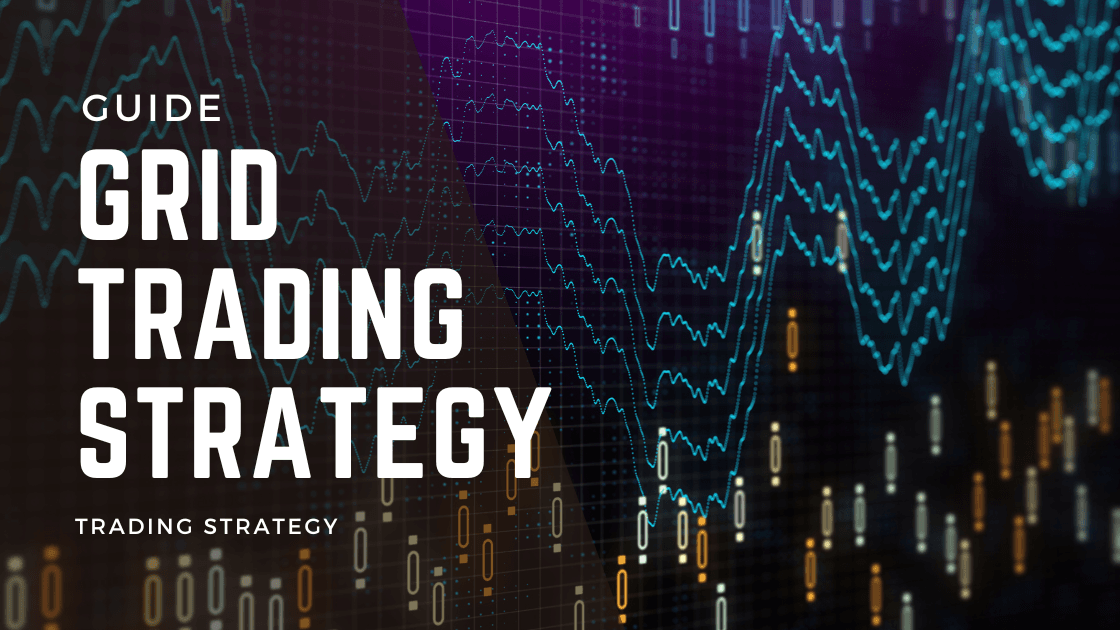Category List


Quick guide: Grid Strategy
In the ever-evolving landscape of financial markets, traders continuously seek innovative approaches to capitalize on price movements while minimizing risk.
The Grid Trading Strategy has emerged as a popular and systematic method designed to do just that.
With its potential to generate profits in both trending and ranging markets, the Grid Trading Strategy has gained traction among traders looking for a disciplined and calculated approach to trading.
What is a grid trading strategy?
The Grid Trading Strategy is a systematic trading method that capitalizes on market volatility by placing a series of buy and sell orders at predetermined price intervals, forming a 'grid' on the price chart.
The Grid Trading approach aims to profit from both upward and downward price swings within a defined range or during a trend, while also providing a structured framework for managing risk.
Data analysis can significantly enhance a grid trading strategy by providing insights into market trends, volatility patterns, and potential support or resistance levels.
Such information allows traders to adjust the grid parameters such as grid size, order spacing, and take-profit levels more effectively to optimize performance according to current market conditions.
Optimal spacing between orders in a grid trading system depends on several factors including current market volatility, average price movement within a given time frame, liquidity of the asset being traded, and the traders risk tolerance.
Spacing should be wide enough to capture significant price movements but tight enough to ensure frequent trades for profitability.
Try A Grid Bot For Free Here |
How To Analyze Risk-Return Spectrum When Using a Grid Trading Strategy?
Assessing the risk-return spectrum involves evaluating the potential profit against possible losses for each trade setup within the grid.
It includes determining position sizes, setting stop-losses if used, calculating expected drawdowns based on historical data or simulations under various market scenarios.
Traders must balance their desire for higher returns with an acceptable level of risk based on their individual risk appetite.
Grid Trading Strategy: Understanding the Fundamentals
The foundation of any successful trading strategy lies in understanding its core principles. Let's dive into the fundamentals of the Grid Trading Strategy.
Key Components of Grid Trading
Mastering the Grid Trading Strategy requires a clear understanding of its key components.
- Grid Interval: The Grid Interval, the price difference between consecutive buy and sell orders, is a critical parameter. A smaller interval captures more minor price fluctuations but can increase transaction costs. A larger interval captures large price swings but might miss smaller profitable movements. The optimal interval depends on market volatility, asset characteristics, and your trading style. Consider using a percentage of the Average True Range (ATR) as a starting point for determining your grid interval..
- Lot Size: Lot Size refers to the quantity of the asset you trade with each grid order. Consistent lot sizing across the grid is common, but advanced strategies may adjust lot size based on market conditions or proximity to support/resistance. Proper lot sizing is crucial for risk management and should be determined based on your account size and risk tolerance.
- Take Profit and Stop Loss Levels: While some grid strategies rely solely on the grid structure for exits, setting Take Profit and Stop Loss levels can enhance risk management. Take Profit orders automatically close a position at a predetermined profit target, securing gains. Stop Loss orders limit potential losses by automatically closing a position if the price moves against you beyond a certain point. These levels can be static or dynamic, adjusting with the market or based on the grid structure.
How Grid Trading Works?
Grid trading thrives in both ranging and trending markets. In a ranging market, as the price oscillates within the grid, buy orders are triggered as the price falls and sell orders are triggered as the price rises, capturing profits from these fluctuations.
In a trending market, the grid can be adapted to follow the trend, with new orders being placed in the direction of the trend as the price progresses.
Profits are accumulated as the price moves through the grid levels, while stop-loss orders (if used) help manage the risk of trend reversals.
Benefits of Grid Trading Strategy
The Grid Trading Strategy offers several advantages.
- Reduced Emotional Trading: By predefining your entry, exit, and risk management parameters, grid trading removes the emotional rollercoaster often associated with discretionary trading. This systematic approach promotes discipline and helps you stick to your plan, even during periods of market volatility.
- Consistent Profits: Grid trading is particularly well-suited for generating consistent profits in sideways or ranging markets. By capturing small price fluctuations within the grid, the strategy can accumulate profits over time, even when there's no clear directional bias..
- Risk Management: While not inherent to all grid strategies, incorporating stop-loss orders at strategic levels can help protect your capital from significant drawdowns, especially during unexpected market swings or trend reversals. This allows you to define your maximum risk per grid..
Factors to Consider When Determining Grid Interval
- Average True Range (ATR): The ATR is a valuable indicator for gauging market volatility. A common approach is to set your grid interval as a percentage of the ATR. For example, you might set your interval to 10-20% of the 14-day ATR. In more volatile markets, you might use a higher percentage, while in less volatile markets, a lower percentage might be more appropriate.
- Support and Resistance Levels: Consider placing your grid orders near significant support and resistance levels. This can increase the likelihood of your orders being filled and potentially lead to more profitable trades.
- Backtesting: The most reliable way to determine the optimal grid interval for a specific market and timeframe is through backtesting. Experiment with different interval settings using historical data to see which settings produce the best results in terms of profitability, drawdown, and trade frequency.
What to Consider for Effective Grid Trading
Mastering the Grid Trading Strategy involves implementing effective techniques to enhance profitability. Here are some essential strategies:
Choosing the Right Market
While grid trading can be applied to various markets, it tends to perform best in markets that exhibit sufficient volatility to trigger grid orders but also experience periods of range-bound price action.
High liquidity is essential to ensure your orders are filled at the desired prices. For example, high capitalization cryptocurrencies are often suitable candidates. However, thinly traded assets with low liquidity should be avoided.
Determining Grid Parameters
Precisely calibrating your grid parameters is crucial. Use the Average True Range (ATR) to gauge volatility and set your grid interval as a percentage of the ATR (e.g., 10-20% of the 14-day ATR).
Your lot size should be determined based on your account size and risk tolerance, often using a fixed percentage risk per trade (e.g., the 1% rule). Backtesting different parameter combinations on historical data is highly recommended.
Trend-Following with Grid Trading
Enhance your grid strategy by incorporating trend-following indicators, such as moving averages or the MACD. For instance, in an uptrend, you could focus on placing more buy orders within the grid, anticipating that the upward trend will continue. Conversely, in a downtrend, you might prioritize sell orders.
Dynamic Grid Adjustments
Markets are dynamic, and your grid should be too. Consider adjusting your grid parameters in response to significant changes in volatility or market structure.
For example, if volatility increases, you might widen your grid interval and adjust your stop-loss levels. If the market transitions from a range to a strong trend, you might shift to a trend-following grid or pause the grid altogether.
Risk Management
Effective risk management is non-negotiable. Determine your maximum risk per trade (e.g., 1% of your account) and set stop-loss orders accordingly.
Be cautious with leverage, as it can amplify both profits and losses. Consider using a trailing stop-loss to lock in profits as the price moves in your favor.

By incorporating both the MACD and RSI indicators as they signal divergence scenarios, this grid trading example shows a setup with a likelihood of upcoming bullish moves from January 19 to February 02 (2025).

With the help of the ATR oscillations, the setup may benefit from assessing the previous and subsequent volatility, to adjust the grid parameters to possible market conditions.

The upper price is defined at 2.19 and the lower price at 1.72 for a grid range of ten placed orders.

As the price drops, the Altrady’s Grid Bot buys (green arrows). When the price increases, the bot sells (red arrows).

The backtesting process throws 18.85% of Grid PnL and 12.09% Net PnL.

Best Practices for Grid Trading
To achieve optimal results with the Grid Trading Strategy, adhere to these best practices.
- Stay Disciplined: Stick to your predetermined grid parameters and trading plan. Avoid making impulsive decisions based on short-term market fluctuations.
- Monitor Market Conditions: Keep a close eye on market developments and news that can impact the price movement. Stay informed to adjust your grid strategy accordingly.
- Regularly Assess Performance: Track the performance of your grid strategy over time. Analyze the results and make necessary adjustments to optimize profitability.
- Diversify Your Grids: Consider diversifying your grid setups across different markets and timeframes. This can help mitigate risks and enhance overall returns.
- Practice Patience: The Grid Trading Strategy is designed for steady gains over time. Be patient and avoid expecting overnight success.
Using a GRID Bot
Integrating a Grid Bot into your trading strategy offers numerous advantages:
- 24/7 Trading: Unlike human traders, a Grid Bot operates 24/7, capturing trading opportunities even while you're asleep or away from the computer.
- Discipline and Consistency: Trading bots follow the parameters without emotions, ensuring consistency in executing your grid strategy.
- Faster Execution: Grid Bots can place orders instantly, taking advantage of even the slightest price fluctuations.
- Backtesting and Optimization: Most bots allow you to backtest and optimize your grid settings using historical data, refining your strategy for better results.
Conclusion
The Grid Trading Strategy presents a valuable opportunity for traders to capitalize on market oscillations and achieve consistent profits.
Remember that success in grid trading requires discipline, continuous monitoring, and risk management. Embrace the versatility of this strategy, and with time and practice, you can unlock its full potential for your trading endeavors.
FAQs: Frequently Asked Questions about Grid Trading Strategy
Can the Grid Trading Strategy work in volatile markets?
Yes, the Grid Trading Strategy can be effective in volatile markets as well. By adjusting grid parameters and stop-loss levels, traders can manage risks even in high-volatility conditions.
Is the Grid Trading Strategy suitable for beginners?
While the Grid Trading Strategy requires some understanding of trading principles, beginners can learn and apply this strategy with proper guidance and practice.
Are there any risks associated with Grid Trading?
Like any trading strategy, the Grid Trading Strategy carries inherent risks. Proper risk management and adherence to the trading plan can help mitigate these risks.
Can the Grid Trading Strategy be automated?
Yes, the Grid Trading Strategy can be automated using trading bots or expert advisors, streamlining the execution process.
What is the ideal grid interval for different markets?
The ideal grid interval varies based on market conditions and trader preferences. Adapting the grid interval to each market's price movements and volatility is essential.
Can I use multiple grid setups simultaneously?
Yes, traders can use multiple grid setups simultaneously across various markets to diversify their trading approach.
In this post
- What is a grid trading strategy?
- How To Analyze Risk-Return Spectrum When Using a Grid Trading Strategy?
- Grid Trading Strategy: Understanding the Fundamentals
- How Grid Trading Works?
- Benefits of Grid Trading Strategy
- Factors to Consider When Determining Grid Interval
- What to Consider for Effective Grid Trading
- Best Practices for Grid Trading
- Using a GRID Bot
- Conclusion
- FAQs: Frequently Asked Questions about Grid Trading Strategy





























